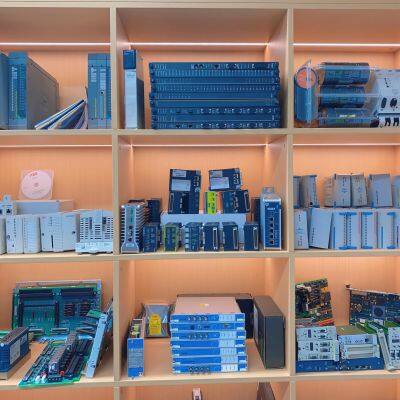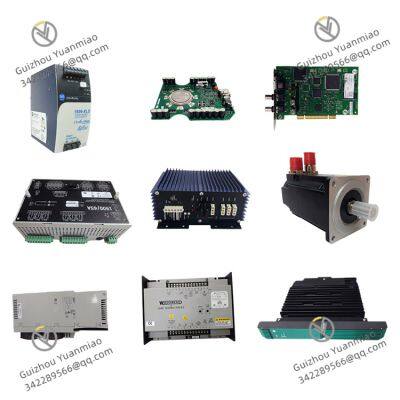Product Description
1. Overview
The ICS TRIPLEX TC-215-01-4M5 is a high-end triple-redundant I/O (Input/Output) module, with its core positioning as the "redundant unit for signal acquisition and control output in Safety Instrumented Systems (SIS)". It mainly serves industries with extremely high requirements for the reliability of signal acquisition and the safety of control output, such as petrochemicals (e.g., Emergency Shutdown System (ESD) for refining units), power (e.g., safety protection systems for auxiliary equipment in nuclear power plants), and metallurgy (e.g., safety control for blast furnace gas recovery). As a core supporting module for safety controllers like the GE Speedtronic Mark VIe and ICS TRIPLEX T8000 series, it undertakes the critical task of "accurate acquisition of process parameters and reliable output of control commands".
With its core advantages of "triple-redundant architecture + high-precision signal processing + adaptability to extreme working conditions", this module delivers irreplaceable value in scenarios such as the integration of safety systems for new installations (e.g., the construction of SIS systems for 10-million-ton-level refining projects) and the upgrading of aging safety systems (e.g., upgrading from ordinary I/O modules to redundant I/O modules). Its core function is to address three major pain points in high-risk industrial scenarios: "distortion in signal acquisition", "control failure caused by single-point faults", and "unstable signal transmission in harsh environments". Through triple-redundant hardware design, high-precision signal conditioning circuits, and anti-interference protection, it achieves ±0.05% precision acquisition of process parameters such as temperature, pressure, and flow rate, as well as millisecond-level reliable control of actuators like valves and pumps. When hazardous working conditions are detected, it ensures delay-free and error-free output of control commands (e.g., emergency shutdown of feed valves), preventing the failure of safety interlocks caused by I/O module malfunctions (a single failure may result in losses of tens of millions of yuan) and safeguarding the safety of units and personnel.
2. Technical Specifications
2.1 Core Signal Processing Parameters
Signal Input Parameters
Supported Signal Types:
Analog Input (AI): 4-20mA DC (2-wire/4-wire), 0-10V DC, RTD (Pt100/Pt1000, -200℃~600℃), thermocouple (Type K/J/T, -270℃~1372℃);
Digital Input (DI): 24V DC dry contact/wet contact, supporting normally open/normally closed signals, response time ≤1ms;
Number of Input Channels: 16 independent input channels (configurable as 8 AI + 8 DI, or 16 full AI/full DI for flexible switching);
Input Precision:
Analog Input: 4-20mA DC/0-10V DC with precision ±0.05% F.S., RTD with precision ±0.1℃ (-200℃~600℃), thermocouple with precision ±0.5℃ (-270℃~1372℃);
Digital Input: Signal recognition voltage range 19-30V DC (high level), 0-5V DC (low level); peak voltage resistance ±2kV (1.2/50μs pulse);
Sampling Rate: Analog input ≥1kHz per channel (synchronous sampling), digital input ≥10kHz per channel, ensuring rapid capture of changes in process parameters.
Signal Output Parameters
Supported Signal Types:
Analog Output (AO): 4-20mA DC (load capacity 0-500Ω), 0-10V DC (load capacity ≥10kΩ);
Digital Output (DO): 24V DC transistor output (maximum load 2A per point), 220V AC relay output (maximum load 5A per point);
Number of Output Channels: 8 independent output channels (configurable as 4 AO + 4 DO, or 8 full AO/full DO);
Output Precision: Analog output precision ±0.1% F.S., linearity ≤0.05% F.S., output ripple ≤10mVrms;
Response Time: Analog output ≤5ms (from command issuance to stable output), digital output ≤1ms (from command issuance to contact action).
Redundancy Performance Parameters
Redundant Architecture: Adopts a "triple voting" architecture (3 independent signal processing units working in parallel, 2oo3 voting mechanism). Each unit independently acquires/outputs signals and achieves data synchronization via an internal high-speed bus (rate ≥100Mbps). When 1 unit fails, the remaining 2 units continue to operate and output consistent signals;
Fault Detection: Supports channel-level self-diagnosis of faults (e.g., open circuit, short circuit, overcurrent) with a diagnostic coverage rate ≥99% and fault detection time ≤100μs. Fault signals are uploaded to the controller in real time via the backplane bus;
Switching Time: Switching time between main and standby units ≤1ms. During switching, there is no fluctuation in the output signal (fluctuation range ≤0.1% F.S.), which does not affect the normal operation of actuators.
2.2 Physical and Environmental Parameters
Physical Specifications
Dimensions: 220mm (length) × 160mm (width) × 80mm (height, including mounting clips). Adopting the standard rack slot design of ICS TRIPLEX, it can be directly inserted into the I/O rack of T8000 series controller cabinets. It is dimensionally compatible with modules of the same series (e.g., TC-201-01-4M5) and allows mixed installation in cabinets;
Weight: Approximately 1.5kg. The modular design supports hot swapping by a single person (replacement time ≤3 minutes), and the plugging/unplugging process does not affect the operation of other modules;
Terminals: Uses spring-type quick-connect terminals (compatible with 1.5mm2~2.5mm2 wires). Input/output terminals are divided into independent zones, and each channel is equipped with an independent fuse (1A/250V) to prevent module damage caused by overcurrent.
Environmental Adaptability
Operating Temperature: -40℃~+70℃, meeting the operating requirements of extremely cold areas (e.g., Northeast Oilfield) and high-temperature workshops (e.g., metallurgical plants). No preheating is required for low-temperature startup (-40℃), and the startup time is ≤20s;
Humidity: 5%~95% (non-condensing, complying with IEC 60068-2-3 standard). In high-humidity coastal environments (e.g., petrochemical terminals), the circuit board shows no corrosion or leakage;
Protection Level: IP20 (for installation inside control cabinets), compatible with safety control cabinets with IP54 protection level to prevent dust from entering the module;
Vibration and Shock Resistance: Vibration resistance level 10g (10Hz~2000Hz, complying with IEC 60068-2-6), capable of withstanding continuous vibration during the operation of gas turbines and compressors; shock resistance level 20g (11ms pulse, complying with IEC 60068-2-27), capable of withstanding transient shocks such as pipeline impact and equipment startup/shutdown;
Electromagnetic Interference (EMI) Resistance: Complies with the EN 61000-6-2 industrial immunity standard. Electrostatic Discharge (ESD) protection: ±15kV (air discharge)/±8kV (contact discharge); radio frequency radiation immunity: 10V/m (80MHz~1GHz). In high-interference environments such as high-voltage cables and high-power motors, the signal acquisition error is ≤0.1% F.S.

2.3 Power Supply and Reliability Parameters
Power Supply Requirements: Operating voltage 24V DC (wide-range adaptation 18V DC~36V DC), powered by the controller rack backplane. Operating current ≤300mA (in full configuration), power consumption ≤7.2W, which does not increase the power supply load of the cabinet;
Isolation Performance: Four-level electrical isolation is implemented between input channels, between output channels, between input and output, and between power supply and signals. The isolation voltage is ≥2500Vrms for 1 minute. Common Mode Rejection Ratio (CMRR) ≥120dB (50Hz), Differential Mode Rejection Ratio (DMRR) ≥100dB, effectively blocking ground loop interference and signal crosstalk;
Reliability Indicators: Mean Time Between Failures (MTBF) ≥500,000 hours (per Telcordia SR-332 standard at 25℃), design life ≥20 years. Key components (e.g., signal conditioning chips, A/D converters, relays) are selected from military-grade products. It supports "channel-level redundancy" (when a channel fails, the standby channel parameter configuration can be activated);
Communication Interface: Communicates with the controller via the system backplane bus, with a data transmission rate of 100Mbps and latency ≤1ms. It supports channel parameter configuration, fault diagnosis, and signal status reading through the ICS TRIPLEX Control Studio configuration software.
3. Functional Features
3.1 Highly Reliable Redundant Signal Processing
Triple-Redundant Architecture: The module integrates 3 independent signal processing units (including A/D converters, CPUs, and communication interfaces) inside. Each unit independently acquires input signals, executes control algorithms, and outputs signals. Real-time data synchronization is achieved via an internal high-speed synchronous bus (100Mbps), and the final output adopts a "2oo3 voting" mechanism (actions are executed only when the outputs of the 3 units are consistent; when 2 or more units have inconsistent outputs, a fault alarm is triggered and switching to the standby unit is performed). For example, in the ESD system of a refining unit, when collecting the reactor pressure (4-20mA signal), the 3 units perform synchronous sampling and calculation. If 1 unit has a sampling deviation due to interference (e.g., the actual pressure corresponds to 12mA, but the faulty unit displays 15mA), the remaining 2 units output a consistent 12mA signal, ensuring accurate upload of pressure data to the controller and avoiding false triggering of interlocks;
Channel-Level Fault Tolerance: Each input/output channel is equipped with an independent fault diagnosis circuit, which can real-time detect faults such as "channel open circuit" (e.g., broken sensor cable), "channel short circuit" (e.g., short circuit between signal wire and power wire), and "overcurrent" (e.g., excessive load on the output channel). When a channel fails, the module automatically shields the signal of that channel and activates the standby channel (configuration required in advance). At the same time, a fault code (e.g., "F12=AI Channel 3 Open Circuit") is displayed on the HMI, allowing maintenance personnel to conduct targeted inspections without shutting down the system for maintenance, thus ensuring continuous system operation;
High-Precision Signal Conditioning: Adopts a combination of "instrumentation amplifier + 24-bit high-precision A/D converter", combined with digital filtering algorithms (supporting moving average, Kalman filtering, etc.), to accurately condition input signals. For example, to solve the cold junction compensation problem of thermocouple signals, the module has a built-in high-precision temperature sensor (precision ±0.1℃) that real-time compensates for the impact of ambient temperature on thermocouple measurements, ensuring a measurement error ≤0.5℃ within the full range of -270℃~1372℃; for weak fluctuations in 4-20mA signals, the signal fluctuation amplitude is reduced from ±0.5mA to ±0.01mA through a 1kHz sampling rate and moving average filtering (filtering times configurable), improving data stability.
3.2 Robust Environmental Adaptation Design
Extreme Temperature Protection: The circuit board adopts double protection of "nano-level three-proof paint + ceramic coating", which can resist the erosion of -40℃ extreme cold and 70℃ high temperature. In a -40℃ low-temperature environment, the performance of internal components (e.g., capacitors, resistors) of the module does not degrade, and the A/D conversion precision remains ±0.05% F.S.; in a 70℃ high-temperature environment, the heat dissipation design (aluminum housing + heat dissipation holes) ensures that the internal chip temperature is ≤85℃ (lower than the rated temperature of 125℃), avoiding signal drift caused by high temperature;
Anti-Interference and Surge Protection: The input/output ports are equipped with TVS transient voltage suppressor diodes (protection level ±2kV) and common-mode inductors, which can resist surge voltages (e.g., spikes caused by lightning strikes and motor startup/shutdown) and electromagnetic interference (e.g., harmonics generated by frequency converters) in industrial environments. For example, when a ±2kV surge voltage occurs in the power grid, the TVS diode turns on instantly, diverting the surge current to the ground to protect the internal circuit of the module from damage; the common-mode inductor suppresses common-mode interference signals, ensuring that the transmission error of 4-20mA signals in high-interference environments is ≤0.1% F.S.;
Dust and Oil Resistance: The housing adopts a sealed design, and the terminals are equipped with dust covers, which can prevent dust and oil in industrial workshops from entering the module. In the high-dust environment of a metallurgical plant, after 3 years of continuous operation, there is no dust accumulation inside the module, and the signal acquisition and output performance do not degrade; in the high-oil environment of an oil refinery, there is no oil adhesion on the circuit board, avoiding short-circuit faults caused by oil.
3.3 Convenient Maintenance and Flexible Configuration
Visual Configuration and Debugging: Supports parameter configuration through the ICS TRIPLEX Control Studio configuration software. The graphical interface allows intuitive setting of parameters such as "channel signal type" (e.g., setting AI Channel 1 to Pt100), "sampling rate" (e.g., setting DI Channel to 10kHz), "filtering method" (e.g., setting AI Channel to Kalman filtering), and "fault threshold" (e.g., setting DO Channel overcurrent threshold to 2A). After configuration, the parameters are downloaded to the module via Ethernet, eliminating the need for on-site manual potentiometer adjustment. The debugging time is shortened from 2 hours to 30 minutes;
Remote Status Monitoring: The module uploads data such as "signal value", "fault status", and "redundant unit working status" of each channel to the controller in real time via the backplane bus. Maintenance personnel can view the data through the HMI in the central control room (e.g., "AI Channel 1: Pressure 10.5MPa, Status Normal; Redundant Units 1/2/3 All Online"), eliminating the need for on-site inspections and improving maintenance efficiency. At the same time, the module supports historical data storage (able to store the latest 1000 fault records and signal extreme values), and maintenance personnel can export the data for trend analysis to predict potential faults in advance (e.g., gradually increasing signal drift of a channel indicates sensor aging);
Flexible Adaptation and Expansion: Supports seamless connection with controllers such as the ICS TRIPLEX T8400 and T8110C series, and is compatible with third-party controllers (e.g., GE Mark VIe) to achieve data interaction via standard communication protocols (e.g., Modbus-TCP). The module adopts a modular design, and the types of input/output channels (e.g., 8AI+8DI, 16AO, etc.) can be flexibly configured according to project requirements without replacing the module hardware, reducing spare parts costs. In addition, it supports multi-module cascading (up to 16 modules can be cascaded), meeting the multi-channel requirements of large-scale projects (e.g., 10-million-ton-level oil refineries).


GE 531X121PCRALG1 POWER CONNECT CARD
GE 369-H1-R-M-F-E-H-E Generator protection Relay
GE CT11T7F10PN1 PMC676RCTX V2.3 01 16 C1145 CR11 V2.x interface board
ABB P8431 TMR Analog Input module
ABB P8151B Communication interface module
TOSHIBA GBU648E-S Rectifier bridge module
CCC TIOC-555HD TRANSITION MODULE
CCC TMPU-1002 Control Board
ABB PPD115A02 3BHE017628R0002 Communication System (FOCS) module
HONEYWELL EG1033AA01 261A1812P02 UV FLAME AMPLIFIER DETECTOR
MOTOROLA FLN4234A PowerPC Processor
MOTOROLA MCP750 CompactPCI Single Board
 yezi
Hi there! Welcome to my shop. Let me know if you have any questions.
yezi
Hi there! Welcome to my shop. Let me know if you have any questions.


